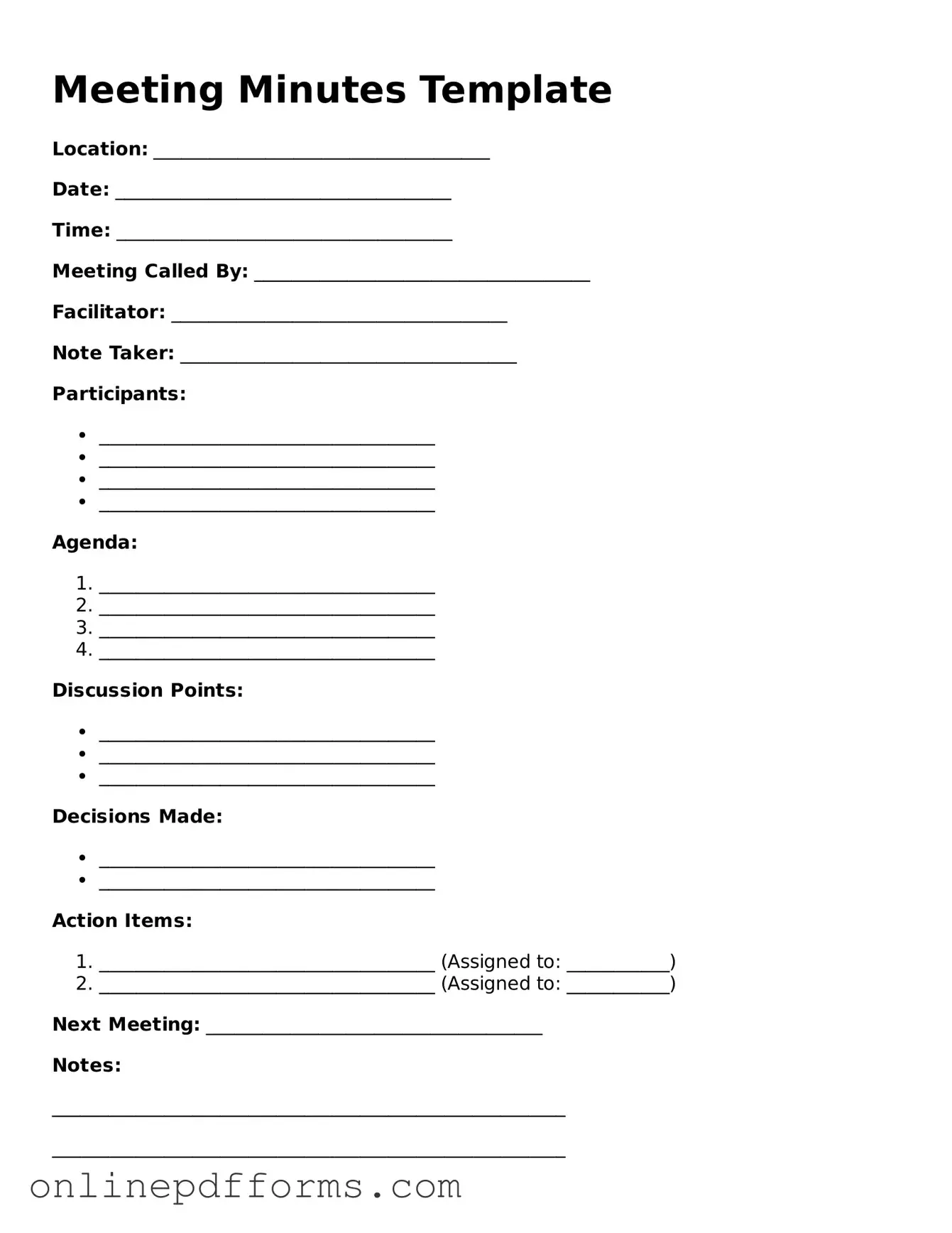The Meeting Agenda serves as a roadmap for a meeting, outlining the topics to be discussed and the order in which they will be addressed. Like meeting minutes, it is a formal document that helps participants prepare for the discussion. While the agenda focuses on what will happen during the meeting, meeting minutes capture what actually occurred. Both documents are essential for ensuring that everyone is on the same page, promoting accountability, and providing a record for future reference.
Meeting Notes are similar to meeting minutes but are typically less formal. They capture key points, discussions, and decisions made during a meeting. While minutes provide a structured account of the meeting, notes may be more free-flowing and personal. Both serve the purpose of documenting the meeting's content, but notes may include personal reflections or insights that are not typically found in formal minutes.
Action Items Lists are often generated during meetings and are closely related to meeting minutes. They specifically highlight tasks assigned to individuals or groups, along with deadlines for completion. While meeting minutes provide a broader overview of discussions and decisions, action items focus on the next steps. This ensures that responsibilities are clear and that follow-up can occur effectively.
Reports can also share similarities with meeting minutes, especially when they summarize the outcomes of a meeting or series of meetings. Reports often provide more detailed analysis and context, while meeting minutes are typically concise. Both documents aim to inform stakeholders about what transpired and can serve as a reference for future discussions or decisions.
Emails summarizing meeting outcomes often function similarly to meeting minutes. They communicate the key points and decisions made during a meeting to those who were not present. While meeting minutes are usually more formal and structured, emails can be more conversational. Both serve the purpose of keeping everyone informed and ensuring that important information is not lost.
The Investment Letter of Intent form serves as a preliminary agreement between parties interested in making an investment. This document outlines the essential terms and conditions that will guide future commitments. Often considered a first step in negotiations, it helps lay the groundwork for a more formal investment agreement. For more detailed information, you can visit documentonline.org/blank-investment-letter-of-intent.
Project Plans may also share characteristics with meeting minutes, particularly when they include decisions made during meetings. Project plans outline the steps needed to achieve a goal, while meeting minutes record discussions that may influence those steps. Both documents are crucial for maintaining clarity and direction throughout a project.
Conference Proceedings are formal records of discussions and presentations at conferences, akin to meeting minutes for larger gatherings. They summarize the key points made by speakers and the discussions that followed. While meeting minutes focus on a single meeting, proceedings cover a broader event, but both serve to document important conversations and decisions for future reference.
Board Resolutions are formal documents that record decisions made by a board during a meeting. They are similar to meeting minutes in that they provide an official account of what was decided. However, resolutions are typically more formal and legally binding, while meeting minutes serve as a summary of discussions. Both documents play a critical role in governance and accountability.
Minutes of Evidence, often used in legal contexts, document testimonies and evidence presented during hearings or trials. They share similarities with meeting minutes in that they provide a record of what was said and decided. However, minutes of evidence tend to be more detailed and focused on legal proceedings, while meeting minutes are broader and cover various types of meetings.
Lastly, Workshop Summaries capture the outcomes and discussions from workshops, similar to meeting minutes. They provide a record of what was learned, the activities conducted, and any conclusions drawn. While meeting minutes may focus on formal meetings, workshop summaries can be more dynamic and interactive, reflecting the collaborative nature of workshops. Both documents aim to document and share knowledge gained during a gathering.
